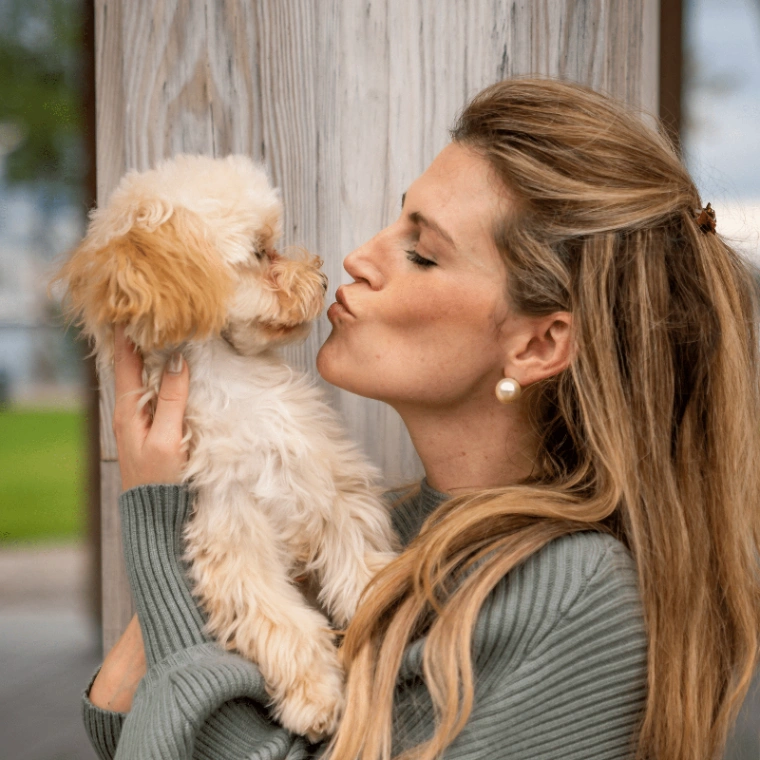American Bully




 Find Reputable Breeders Near You
Find Reputable Breeders Near You
Browse Reputable Breeders who meet Paction's Certification standards.
Search for a PupGet to Know American Bullies
- Not a Pit Bull: Though often confused with the American Pit Bull Terrier, the American Bully is a separate breed with a different temperament and appearance, developed specifically for a calmer, more companion-oriented personality.
- Muscle Without Meanness: Despite their strong, intimidating looks, American Bullies are known for being incredibly gentle and tolerant, especially with children, earning them a reputation as affectionate "nanny dogs" in the right homes.
- Low Prey Drive Compared to Ancestors: Unlike some of their terrier ancestors, American Bullies tend to have a much lower prey drive, making them more predictable around other pets though early socialization is still essential.
- Rapid Rise in Popularity: The breed has seen a huge surge in popularity worldwide, particularly on social media, where their expressive faces, muscular frames, and playful personalities make them favorites among dog lovers and influencers alike.
- Four Recognized Sizes: The American Bully comes in four distinct size varieties, Pocket, Standard, Classic, and XL, all sharing the same breed traits but differing in height and build, making them one of the most size-diverse companion breeds.
Breed History
The American Bully is a relatively modern breed that originated in the United States during the late 20th century, with its development gaining momentum in the 1990s. It was created by crossing the American Pit Bull Terrier and the American Staffordshire Terrier, with later influence from other bully-type breeds to enhance traits like a stockier build, broader head, and a more laid-back temperament. Unlike its working dog ancestors, the American Bully was bred primarily as a companion animal, emphasizing loyalty, stability, and a friendly disposition. The breed quickly gained popularity for its powerful appearance combined with a gentle and affectionate nature. In 2013, the United Kennel Club (UKC) officially recognized the American Bully as a distinct breed.
Personality and Behaviour
- Affectionate & Loyal: They are a devoted companion for families and individuals alike. Despite their muscular, intimidating appearance, these dogs are typically gentle, tolerant, and eager to form close bonds with their people. They thrive on human interaction and often see themselves as lap dogs, no matter their size. Their friendly and outgoing nature also makes them excellent with children when raised and socialized properly.
- Confident & Emotionally Balanced: They are usually calm indoors and can adapt well to various living environments, provided they receive regular attention and exercise. While they tend to be good with other pets, early socialization is key to ensuring they grow up to be sociable and respectful around other animals and unfamiliar people. Their low prey drive and strong desire to please make them easier to manage than some other bully breeds.
- Independent: American Bullies can show a streak of independence or stubbornness, particularly if training is inconsistent or overly harsh. They respond best to positive reinforcement methods and clear boundaries. With the right guidance, they become well-mannered, confident dogs who enjoy learning and being part of the family. Their protective instincts also make them naturally alert, though not aggressive, making them reliable watchdogs without being overly reactive.
Care
- Exercise: American Bullies have a moderate energy level and require regular daily exercise to stay fit and mentally satisfied. A combination of daily walks, play sessions, and light activities like fetch or tug-of-war is typically enough for most Bullies. Larger varieties like the XL may enjoy slightly more rigorous activity, but they’re generally not hyperactive. While they don’t need the same level of stimulation as high-drive working breeds, regular movement is essential to prevent boredom, restlessness, or weight gain. They're happiest when included in family activities and love having a secure yard or open space to explore under supervision.
- Grooming: Grooming needs for the American Bully are low-maintenance thanks to their short, smooth coat. Weekly brushing with a soft bristle or rubber grooming mitt helps reduce loose hair and keeps their coat healthy and shiny. They are moderate shedders, with slightly increased shedding in seasonal transitions. Regular baths every few weeks (or when dirty) are sufficient to keep them clean and odor-free. It’s also important to maintain basic hygiene, including nail trimming, ear cleaning, and dental care, to prevent infections or health issues. Their low grooming demands make them easy to manage, even for first-time dog owners.
- Training: American Bullies are intelligent and eager to please, making them very trainable with the right approach. They respond best to positive reinforcement, such as treats, praise, and play, and can become stubborn if faced with harsh or inconsistent handling. Early training is crucial, especially for larger varieties, to ensure they are polite and manageable as adults. Socialization from a young age is equally important — exposing them to different people, pets, and environments helps build a confident, balanced temperament. With consistent guidance, American Bullies often excel in basic obedience and can even thrive in dog sports or therapy work due to their loyal and responsive nature.
American Bully Summary
What to ask your breeder?
Here’s a short summary of what you should be asking your breeder:
American Bully Health Testing
| Screening | Considerations |
|---|---|
| Hip Dysplasia | One of the following: OFA Radiographic Hip Evaluation PennHIP Evaluation. Results registered with OFA. |
| Elbow Dysplasia | OFA Radiographic Elbow Evaluation |
| OFA ADVANCED CARDIAC EVALUATION | OFA Advanced Cardiac Exam (exam by Cardiologist, must include an Echo) |
How Much Does It Cost to Own an American Bully Per Year?
Determining the cost of owning an American Bully is essential for responsible dog ownership. Use our calculator to estimate expenses, including food, grooming, veterinary care, and more.
The Ultimate Dog Cost Calculator
 Calculate Now
Calculate Now


